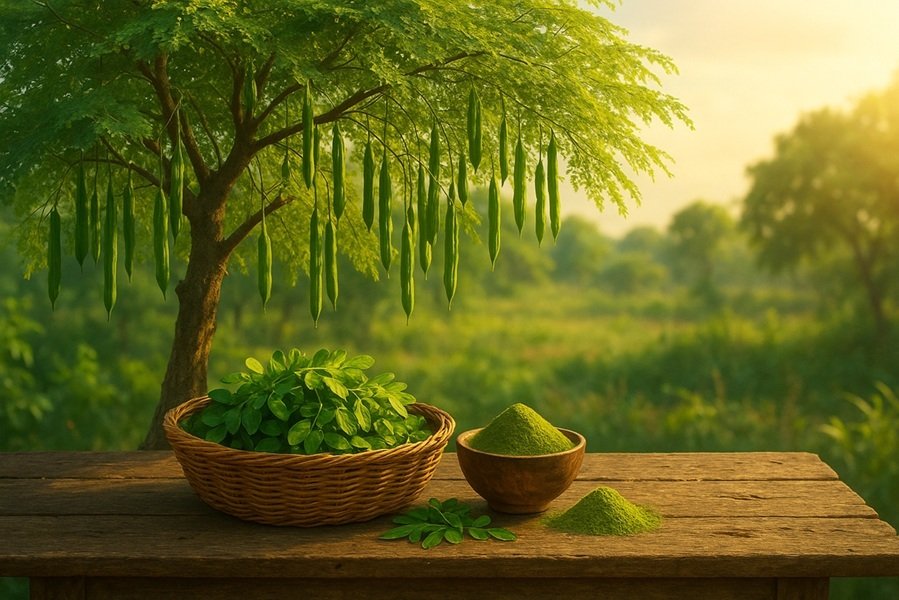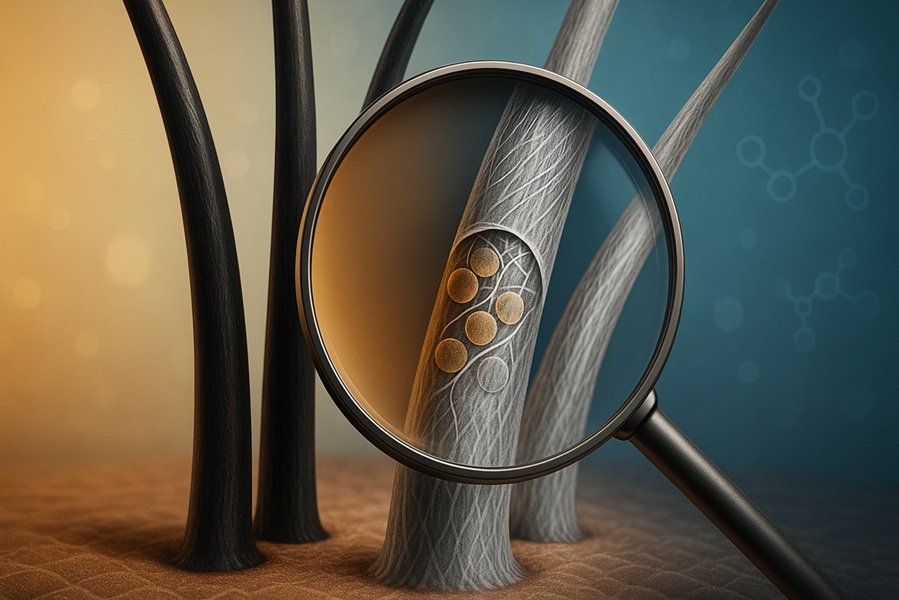
Gangaur is a significant Hindu festival primarily celebrated in the Indian states of Rajasthan, Madhya Pradesh, Haryana, and Uttar Pradesh. This festival, observed on Shukla Paksha Tritiya of Chaitra month, is dedicated to Goddess Parvati (Gaura) and her consort Lord Shiva (Isar). The name ‘Gangaur’ is derived from ‘Gana’ (Lord Shiva) and ‘Gaur’ (Goddess Parvati). The festival symbolizes marital bliss and is observed with great devotion, particularly by women seeking the well-being of their husbands or the blessings of an ideal spouse.
Gangaur 2025: Date and Muhurat
In 2025, Gangaur will be celebrated on Monday, March 31. The Tritiya Tithi will begin at 9:11 AM on March 31, 2025, and end at 5:42 AM on April 1, 2025. As per Hindu traditions, Panchang follows sunrise-to-sunrise calculations.
Significance of Gangaur
Gangaur is one of the most revered festivals for Hindu women. Married women observe this festival for the longevity and prosperity of their husbands, while unmarried girls worship Goddess Parvati to be blessed with a suitable match. The festival embodies love, devotion, and the sanctity of marriage, reinforcing the belief in the divine union of Shiva and Parvati.
Rituals and Observances
1. Preparation and Worship
- The festival preparations begin almost 18 days before the main day, especially in Rajasthan, where Holika Dahan marks the beginning of Gangaur festivities.
- Women create idols of Gaura Mata using clay or sand, adorning them with colorful clothes and jewelry.
- Traditional songs dedicated to Goddess Gawarja and Lord Isar are sung during the puja.
- Devotees observe a strict fast, taking only a single meal, often consisting of milk.
2. The Special Rituals of Gangaur
- Women secretly observe this fast, and even the Prasadam is not shared with the husband.
- Offerings like jewelry made of gram flour, turmeric, or wheat flour (called Gune) are dedicated to Goddess Parvati.
- After the puja, these symbolic ornaments are gifted to mother-in-laws and sister-in-laws.
3. Processions and Celebrations
- In Rajasthan, grand processions featuring beautifully decorated idols of Gaura Mata and Isar Ji take place.
- Women dress in traditional attire, applying sixteen adornments (Solah Shringar).
- The farewell of Gaura Mata to her in-laws’ home is marked by immersion in a river or lake.
Gangaur in Different Regions
Rajasthan
Gangaur is most prominently celebrated in Rajasthan as an 18-day-long festival. The festival starts on Chaitra Krishna Pratipada, a day after Holi, and concludes on Chaitra Shukla Tritiya.
- In Jaipur and Udaipur, spectacular processions featuring elephants, camels, and dancers captivate onlookers.
- The festival symbolizes Goddess Parvati’s visit to her parental home, and on the final day, Lord Shiva (Isar Ji) arrives to take her back.
- A famous traditional song, “Gor Gor Gomti”, is sung during the puja.
Madhya Pradesh (Nimar Region)
- Gangaur is observed on a grand scale, with community feasts called Bhandaras marking the festival’s conclusion.
- The idol immersion is performed with much grandeur and joy.
Braj Region (Uttar Pradesh)
- The festival holds immense significance in Mathura and Vrindavan, where women engage in special prayers and rituals.
- Devotional songs and dances add to the festive spirit.
Gangaur Vrat Katha (गणगौर व्रत कथा)
According to Hindu scriptures, Goddess Parvati observed a severe penance to win Lord Shiva’s love and acceptance as his consort. Her dedication and unwavering devotion pleased Lord Shiva, who granted her the boon of eternal marital bliss. Women observe the Gangaur fast following her example, believing it ensures prosperity, happiness, and longevity for their husbands.
एक समय की बात है, चैत्र मास के शुक्ल पक्ष की तृतीया तिथि को माता पार्वती ने भगवान शिव से अनुमति लेकर नदी स्नान के लिए प्रस्थान किया। स्नान करने के पश्चात माता पार्वती ने रेत से एक पार्थिव शिवलिंग बनाया और विधिपूर्वक उसकी पूजा-अर्चना की। पूजा के दौरान माता पार्वती ने केवल मिट्टी से बनी वस्तुएँ अर्पित कीं और उसी का दो कण प्रसाद के रूप में ग्रहण किया। अंत में प्रदक्षिणा आदि करके पूजन को पूर्ण किया।
माता पार्वती की भक्तिपूर्ण पूजा से प्रसन्न होकर भगवान भोलेनाथ उस पार्थिव शिवलिंग में प्रकट हुए और माता पार्वती को वरदान दिया। भगवान शिव ने कहा, “जो भी स्त्री इस दिन मेरी पूजा करेगी और तुम्हारे इस व्रत का पालन करेगी, उसका पति दीर्घायु होगा, सुखी जीवन व्यतीत करेगा और अंत में मोक्ष प्राप्त करेगा।” यह वरदान देकर भगवान शिव अंतर्धान हो गए।
पार्थिव शिवलिंग की पूजा समाप्त करने के बाद माता पार्वती को लौटने में बहुत देर हो गई। जब वे नदी से वापस आईं तो भगवान शिव के सामने उपस्थित हुईं, उस समय वहाँ देवर्षि नारद जी भी उपस्थित थे। भगवान शिव ने माता पार्वती से देर से आने का कारण पूछा। भगवान शिव के प्रश्न पूछने पर माता पार्वती ने कहा, “मैंने नदी के किनारे अपने भाई, भाभी और अन्य परिजनों को देखा। उन्होंने मुझसे आग्रह किया कि मैं दूध-चावल ग्रहण करूँ और विश्राम करूँ। मैंने उनके आग्रह को स्वीकार कर लिया, इसी कारण मैं विलंब से आई हूँ।”
भगवान शिव ने लीला करते हुए कहा, “मैं भी दूध-चावल खाना चाहता हूँ।” और भगवान शिव नदी तट की ओर बढ़े। माता पार्वती ने मन ही मन भगवान शिव से प्रार्थना की, “हे भोलेनाथ! यदि मैं आप पर पूर्ण श्रद्धा रखती हूँ तो कृपया इस समय मेरी लाज रखिए, हे प्रभु! मेरी बातों की रक्षा कीजिए।”
माता पार्वती मन ही मन इस उहापोह में थीं और भगवान शिव के पीछे चल रही थीं। तभी उन्होंने नदी के तट पर एक विशाल भव्य महल देखा। उस महल में प्रवेश करते ही माता पार्वती के भाई, भाभी और पूरा परिवार वहाँ उपस्थित मिला। उन्होंने भगवान शिव का भव्य स्वागत किया और विभिन्न प्रकार से उनकी स्तुति करने लगे। उनके सत्कार से प्रसन्न होकर भगवान शिव उस महल में दो दिन तक रहे।
फिर तीसरे दिन माता पार्वती ने भगवान शिव से प्रस्थान करने का अनुरोध किया। लेकिन भगवान शिव उस महल में और अधिक समय बिताना चाहते थे। अतः माता पार्वती अकेली ही वहाँ से चल पड़ीं। अंततः भगवान शिव और देवर्षि नारद जी भी माता पार्वती के पीछे चल दिए।
चलते-चलते जब वे बहुत दूर आ गए, तो भगवान शिव को अचानक याद आया कि वे अपना पुष्पहार पार्वती जी के मायके में भूल आए हैं। यह सुनकर माता पार्वती तुरंत उस पुष्पहार को लेने के लिए जाने लगीं, लेकिन भगवान शिव ने उन्हें रोककर देवर्षि नारद जी को माला लाने का आदेश दिया।
नदी के तट पर पहुँचकर जब नारद जी ने वहाँ देखा, तो उन्हें कोई महल नहीं दिखा, बल्कि वहाँ एक घना जंगल था, जहाँ भयानक जंगली पशु विचरण कर रहे थे। यह दृश्य देखकर देवर्षि नारद आश्चर्यचकित हो गए और सोचने लगे कि कहीं वे किसी अन्य स्थान पर तो नहीं आ गए। तभी भगवान शिव की लीला से वहाँ एक भयानक बिजली चमकी, जिससे नारद जी को एक वृक्ष पर भगवान शिव की माला लटकी हुई दिखाई दी।
देवर्षि नारद वह माला लेकर भगवान शिव के पास पहुँचे और आश्चर्यचकित होकर भगवान शिव को पूरी घटना सुनाई।
देवर्षि नारद ने भगवान शिव से कहा, “हे भोलेनाथ! यह आपकी कैसी अद्भुत लीला है? वहाँ न तो वह भव्य महल है, न माता पार्वती के परिजन, बल्कि वहाँ तो घना जंगल और भयंकर पशु हैं। हे लीला धर! कृपया मेरे संशय का निवारण कीजिए।”
देवर्षि नारद जी को आश्चर्यचकित देखकर भगवान शिव मंद-मंद मुस्कुराए और बोले, “हे देवर्षि! यह मेरा कार्य नहीं है, बल्कि यह माता पार्वती की मायावी लीला है, जिससे तुम चकित हो गए। माता पार्वती ने अपने पार्थिव शिवलिंग की पूजा को गोपनीय रखना चाहा, इसलिए उन्होंने यह सत्य छिपा दिया।”
भगवान शिव की बातें सुनकर माता पार्वती ने कहा, “हे प्रभु! मैं कौन होती हूँ? यह सब आपकी कृपा का ही फल है।”
भगवान शिव और माता पार्वती की इस लीला को देखकर देवर्षि नारद ने कहा, “हे माता! हे जगतजननी! आप पतिव्रताओं में श्रेष्ठ हैं। यह लीला आपके पति व्रत के प्रभाव से ही पूर्ण हुई है। संसार की स्त्रियाँ मात्र आपका स्मरण करके ही अखंड सौभाग्य प्राप्त करती हैं। सभी सिद्धियाँ आपसे ही उत्पन्न होती हैं और आपमें ही विलीन हो जाती हैं। इसलिए आपके लिए यह लीला मात्र एक क्षणिक कार्य है। हे माता! गोपनीय पूजा साधारण पूजा की अपेक्षा अधिक फलदायी और प्रभावी होती है।”
अतः मैं यह आशीर्वाद देता हूँ कि जो भी स्त्रियाँ अपने पति की गोपनीय रूप से पूजा करेंगी और उनके कल्याण की कामना करेंगी, उन्हें भगवान शिव की कृपा से दीर्घायु, उत्तम पति और संतान की प्राप्ति होगी।”
Gangaur Loka Geet
गौर गौर गोमती ईसर पूजे पार्वती
पार्वती का आला-गीला, गौर का सोना का टीका
टीका दे, टमका दे, बाला रानी बरत करयो
करता करता आस आयो वास आयो
खेरे खांडे लाडू आयो, लाडू ले बीरा ने दियो
बीरो ले मने पाल दी, पाल को मै बरत करयो
सन मन सोला, सात कचौला , ईशर गौरा दोन्यू जोड़ा
जोड़ ज्वारा, गेंहू ग्यारा, राण्या पूजे राज ने, म्हे पूजा सुहाग ने
राण्या को राज बढ़तो जाये, म्हाको सुहाग बढ़तो जाये,
कीड़ी- कीड़ी, कीड़ी ले, कीड़ी थारी जात है, जात है गुजरात है,
गुजरात्यां को पाणी, दे दे थाम्बा ताणी
ताणी में सिंघोड़ा, बाड़ी में भिजोड़ा
म्हारो भाई एम्ल्यो खेमल्यो, सेमल्यो सिंघाड़ा ल्यो
लाडू ल्यो, पेड़ा ल्यो सेव ल्यो सिघाड़ा ल्यो
झर झरती जलेबी ल्यो, हर-हरी दूब ल्यो गणगौर पूज ल्यो
इस प्रकार सोलह बार बोल कर अन्त में बोलें- एक-लो , दो-लो …… सोलह-लो।
Conclusion
Gangaur is not just a festival but a grand expression of devotion, love, and cultural heritage. It unites families, strengthens marital bonds, and honors the divine couple Shiva and Parvati. The celebrations, rituals, songs, and processions make Gangaur a vibrant and cherished festival, especially in Rajasthan and its neighboring regions. The festival is a beautiful blend of tradition, faith, and festivity, keeping alive the rich cultural ethos of India.
As Gangaur 2025 approaches, devotees are preparing to immerse themselves in this grand celebration of divine love and commitment.






